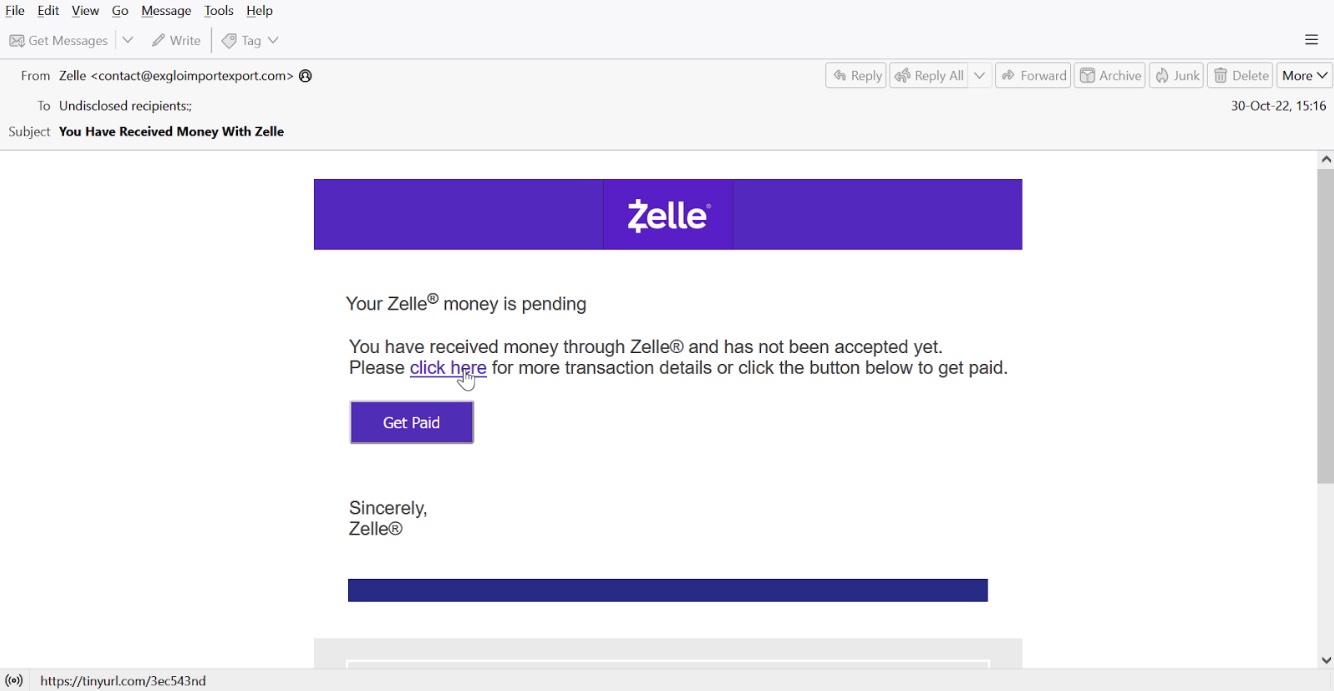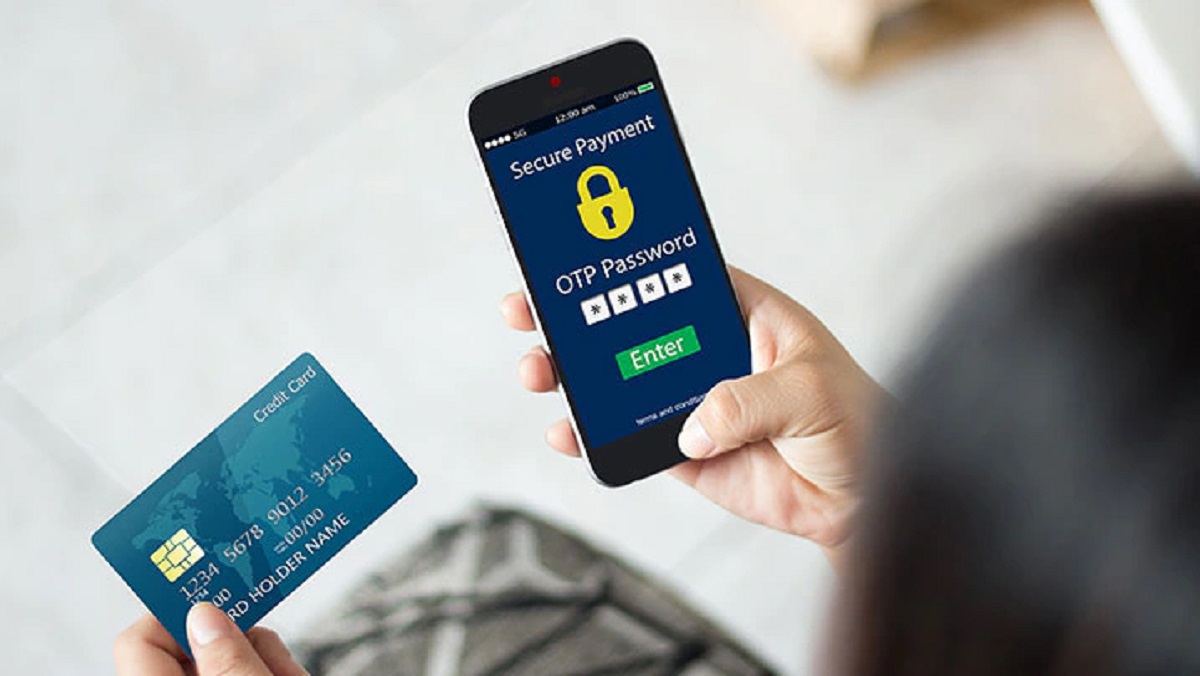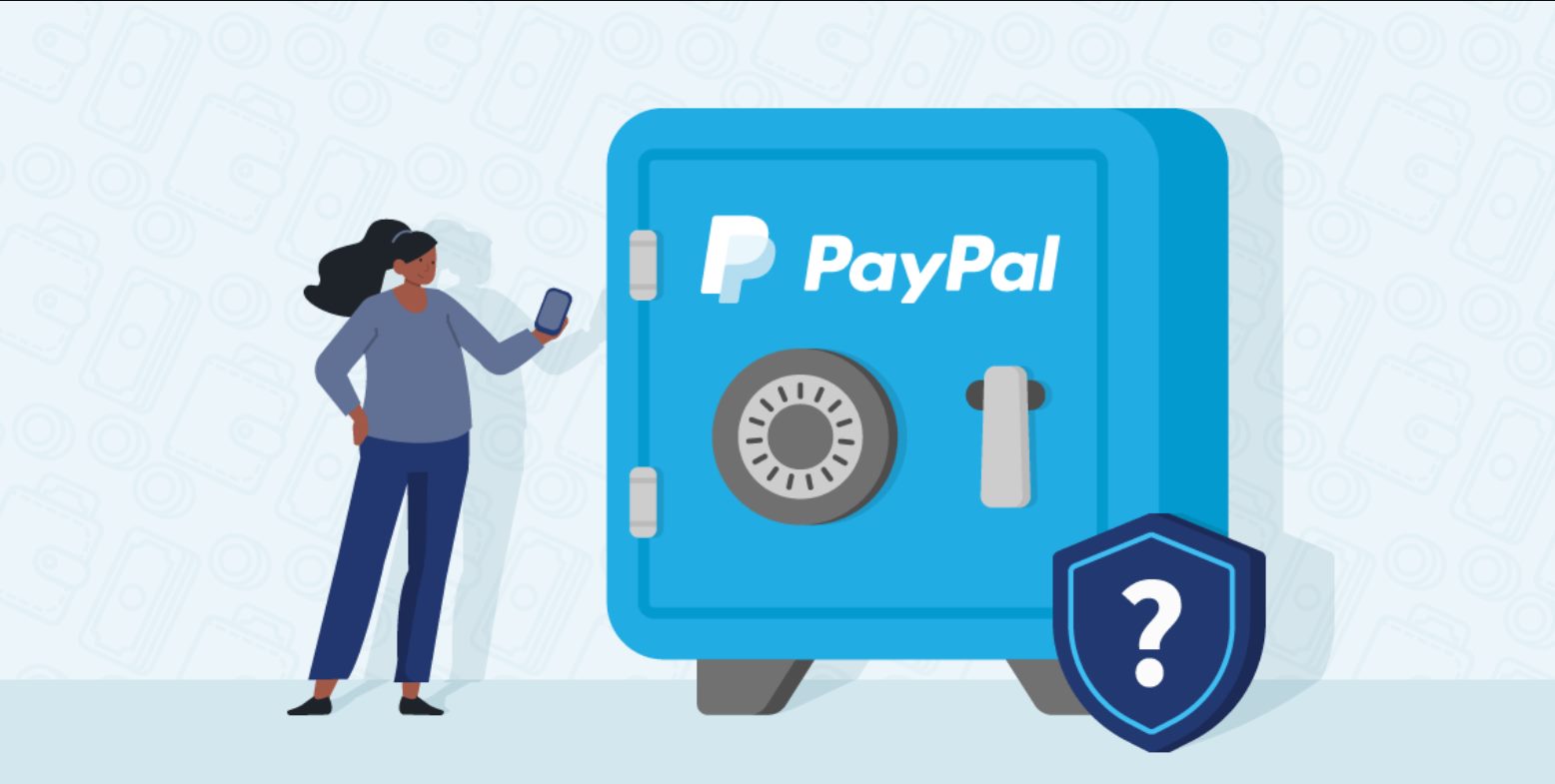Introduction
Welcome to the world of transactional email! In today’s digital age, email has become an integral part of our personal and professional lives. It is not just a medium for communication, but also a powerful tool for businesses to engage with their customers. While we are all familiar with promotional emails and newsletters, there is another type of email that plays a crucial role in our day-to-day online interactions – transactional email.
Transactional email is a specific type of email that is triggered by a user’s action or inaction, providing information, confirmation, or notification related to that action. Unlike promotional emails, which focus on marketing and sales, transactional emails are designed to provide updates, receipts, invoices, order confirmations, password resets, and similar essential information.
With the rise of e-commerce and online services, transactional email has become an indispensable part of businesses’ communication strategies. It not only ensures that customers stay informed about their transactions but also helps build trust and credibility for the brand.
In this comprehensive guide, we will delve into the world of transactional email. We will explore what it is, how it works, its benefits, common use cases, best practices for sending transactional email, and how to choose the right transactional email service provider.
So, whether you are a business owner, marketer, developer, or simply curious about the inner workings of transactional email, this guide is for you. By the end, you will have a solid understanding of transactional email and be equipped with the knowledge to leverage its power effectively.
Definition of Transactional Email
Before we delve deeper into the world of transactional email, let’s start with a clear definition. Transactional email refers to a type of email that is triggered by a specific action or event, typically initiated by a user. These emails are not promotional in nature but are crucial for facilitating a transaction or providing important information to the recipient.
Unlike promotional emails, transactional emails are personalized and tailored to the individual user. They are highly relevant and contain specific details related to the action or transaction that the user has undertaken.
Transactional emails serve various purposes, including:
- Confirmation: Transactional emails are often sent as a confirmation of a user’s action or request. Whether it is confirming a purchase, subscribing to a service, or updating account information, these emails provide immediate reassurance to the user that their action has been successfully processed.
- Notification: Transactional emails act as a means to notify users about important updates or changes related to their account. This could include password resets, account lockouts, or changes in subscription status. By sending these emails, businesses can proactively keep their users informed and prevent any potential confusion or frustration.
- Receipts and Invoices: For e-commerce businesses, transactional emails serve as digital receipts or invoices. These emails contain detailed information about the purchase, including the items bought, total cost, and any applicable taxes or discounts. This not only provides customers with a record of their transaction but also acts as proof of purchase.
- Status Updates: From order tracking to service requests, transactional emails keep users informed about the status of their requests. Whether it is notifying customers about the progress of their order, providing updates on the delivery status, or informing them about the resolution of a support ticket, these emails help maintain transparency and improve customer experience.
It is important to note that transactional emails should not be confused with promotional or marketing emails. While promotional emails aim to drive sales or engagement, transactional emails focus on providing valuable and relevant information to users. They are an essential component of any business’s communication strategy, ensuring that customers stay informed, engaged, and satisfied.
Now that we have a clear understanding of what transactional email entails, let’s delve into how it actually works and the underlying principles that govern its functionality.
How Does Transactional Email Work?
Now that we understand the definition and purpose of transactional email, let’s explore how it actually works. Transactional emails are typically sent through an application or system that is integrated with an email service provider (ESP) or an SMTP relay service. These systems allow businesses to automate the sending of transactional emails and ensure their reliable delivery.
Here is a step-by-step breakdown of how transactional email works:
- User Action: The process of transactional email starts with a user taking a specific action or triggering an event. This could include making a purchase, signing up for a service, submitting a form, or requesting a password reset.
- Email Trigger: Once the user takes the desired action, the system detects the trigger event and initiates the process of sending a transactional email. The system is programmed to recognize different triggers and associate them with specific email templates or sequences.
- Email Generation: The next step involves generating the content for the transactional email. This includes pulling relevant data and information related to the user’s action and populating it dynamically into the email template. The content could include order details, user account information, personalized greetings, and specific instructions.
- Email Personalization: Transactional emails are designed to be highly personalized and relevant to the recipient. This personalization is achieved by dynamically inserting user-specific information into the email, such as their name, account details, and any relevant transactional data. This level of personalization helps create a tailored experience for the recipient, enhancing engagement and trust.
- Email Sending: Once the email content is generated and personalized, it is then sent using the selected ESP or SMTP relay service. These services handle the actual delivery of the email, ensuring it reaches the recipient’s inbox reliably and promptly.
- Email Delivery Monitoring: After sending the transactional email, it’s essential to monitor its delivery status. ESPs or SMTP relay services provide tracking and reporting features to monitor the delivery, including delivery success, open rates, click-through rates, and bounce rates. This data helps businesses assess the effectiveness of their transactional email campaigns, identify any delivery issues, and optimize future email communications.
By following this process, businesses can automate the sending of transactional emails, ensuring timely and accurate communication with their users. The ability to dynamically generate personalized content and track delivery metrics enables businesses to provide a seamless and reliable user experience.
Now that we have explored the inner workings of transactional email, let’s move on to the next section, where we will discuss the numerous benefits that transactional email offers to businesses.
Benefits of Transactional Email
Transactional email offers a host of benefits for businesses of all sizes. Let’s explore some of the key advantages of leveraging transactional email in your communication strategy:
- Enhanced Customer Communication: Transactional emails provide a direct and personalized means of communication with your customers. By sending timely and relevant updates, confirmations, and notifications, you can keep your customers informed about their transactions and interactions with your business. This helps build trust, reduces customer inquiries, and improves overall customer satisfaction.
- Improved Customer Experience: Transactional emails play a crucial role in enhancing the overall customer experience. By providing clear and detailed information about their purchases, account updates, and support interactions, you can ensure that customers have a smooth and seamless experience with your brand. Easy-to-understand receipts, order confirmations, and shipping updates contribute to a positive brand image and repeat business.
- Increased Customer Engagement: Transactional emails provide an opportunity to engage with your customers beyond the initial point of interaction. By including personalized recommendations, upsell offers, or links to related content, you can encourage further engagement and drive additional conversions. These emails serve as touchpoints to nurture customer relationships and promote ongoing engagement with your brand.
- Brand Consistency: Transactional emails offer a chance to showcase your brand identity and maintain consistency across all customer touchpoints. By using consistent branding elements such as logos, colors, and fonts, you reinforce your brand image and create a cohesive experience for your customers. Consistency in transactional email design and messaging helps build brand recognition and trust.
- Opportunity for Upselling and Cross-Selling: Transactional emails provide a valuable opportunity to generate additional revenue by including upsell or cross-sell recommendations. By suggesting relevant products or services based on the customer’s purchase or interaction history, you can leverage transactional emails to drive incremental sales and increase the average order value.
- Better Analytics and Insights: With transactional email, you gain access to valuable data and insights about your customers’ behavior and preferences. By tracking delivery rates, open rates, and click-through rates, you can gain insights into the effectiveness of your transactional email campaigns. This data can help you identify areas for improvement and refine your email communications for better engagement and conversions.
By leveraging the benefits of transactional email, businesses can establish strong customer relationships, improve brand perception, and drive revenue growth. Transactional emails serve as a powerful tool for delivering essential information, engaging customers, and enhancing their overall experience with your brand.
Now that we understand the benefits of transactional email, let’s move on to exploring the common use cases where transactional email is widely used.
Common Use Cases for Transactional Email
Transactional email serves a wide range of purposes across various industries. Here are some common use cases where transactional email is widely utilized:
- Order Confirmation: One of the most common use cases for transactional email is sending order confirmations to customers after they make a purchase. These emails include details such as the order number, items purchased, shipping information, and payment details. Order confirmation emails provide reassurance to customers and act as a reference for future communication.
- Password Resets: When a user forgets their password and requests a reset, transactional emails are used to send a secure link or temporary password to regain account access. These emails typically include instructions on how to reset the password securely, ensuring the user can regain access to their account in a seamless and secure manner.
- Account Notifications: Transactional emails are valuable for keeping customers informed about changes or updates to their accounts. This could include account activation notifications, account status changes, subscription renewals, or changes in membership levels. These notifications help customers stay informed about their account’s status and maintain control over their user experience.
- Shipping and Delivery Updates: For e-commerce businesses, transactional emails are instrumental in providing customers with real-time updates on their shipping and delivery status. These emails include tracking information, estimated delivery dates, and any relevant delivery updates. By keeping customers informed, you enhance their post-purchase experience and improve satisfaction.
- Appointment Reminders: Transactional emails are commonly used in industries such as healthcare, salons, and professional services to send appointment reminders to clients. These emails include the appointment date, time, location, and any additional instructions. Appointment reminders reduce no-shows, improve efficiency, and enhance customer satisfaction.
- Account Verification: When users sign up for an online service or create an account, transactional emails are often sent to verify their email address. These verification emails include a unique link or code that the user needs to click or enter to confirm their email. Account verification emails help ensure that users provide valid email addresses and reduce the risk of fake or spam accounts.
- Payment and Subscription Reminders: Subscription-based businesses leverage transactional emails to send payment reminders and subscription expiration notifications to customers. These emails serve as gentle reminders to renew subscriptions and ensure uninterrupted access to services. By sending timely reminders, businesses can reduce churn and maximize customer lifetime value.
These are just a few examples of the common use cases for transactional email. However, the versatility of transactional email makes it applicable across many industries and scenarios. From customer notifications to account updates and order tracking, transactional email plays a crucial role in ensuring effective and efficient communication with customers.
Now that we have explored the common use cases for transactional email, let’s move on to discussing best practices for sending transactional email.
Best Practices for Sending Transactional Email
When it comes to sending transactional emails, it’s essential to follow best practices to ensure optimal deliverability, engagement, and user experience. Here are some key best practices to keep in mind:
- Email Design and Branding: Create transactional email templates that follow your brand guidelines and maintain consistency with your website or application. Use a clean and professional design, including your logo, brand colors, and fonts. Ensure that the email content is visually appealing, well-organized, and easy to read.
- Personalization: Personalize transactional emails by including the recipient’s name and any relevant information related to their action or transaction. Use dynamic placeholders to populate user-specific details such as order numbers, account information, and purchase details.
- Clear and Concise Content: Keep transactional email content clear, concise, and to the point. Include only the necessary information and avoid excessive or irrelevant details. Use a conversational and friendly tone to engage with your customers, but ensure that the primary purpose of the email is easily understood.
- Call-to-Action (CTA): Include a clear and prominent call-to-action in your transactional emails, where relevant. Whether it’s a link to track an order, reset a password, or access an account, make it easy for recipients to take the desired action. Use compelling and action-oriented language for your CTAs to encourage engagement.
- Responsive Design: Optimize your transactional email templates for mobile devices. With a growing number of users accessing emails on mobile devices, it’s crucial that your emails adapt to different screen sizes and resolutions to ensure a seamless user experience.
- Testing and Previewing: Always test your transactional emails before sending them to customers. Check for any formatting or rendering issues across different email clients and devices. Preview the email to ensure that it appears as intended and all dynamic content is populated correctly.
- Delivery Optimization: To improve email deliverability, ensure that your transactional emails comply with email deliverability best practices. Use reputable email service providers or SMTP relay services that have robust delivery infrastructure and maintain good sender reputation. Implement proper authentication protocols such as SPF, DKIM, and DMARC to verify the authenticity of your emails.
- Tracking and Analytics: Implement email tracking and analytics to monitor the performance of your transactional emails. Track key metrics such as delivery rates, open rates, click-through rates, and bounce rates to evaluate the effectiveness of your email campaigns and identify areas for improvement.
- Compliance with Regulations: Ensure that your transactional emails comply with relevant email marketing regulations, such as GDPR and CAN-SPAM Act. Provide recipients with clear options to unsubscribe or manage their email preferences, and handle any data collected in a secure and privacy-conscious manner.
By following these best practices, you can ensure that your transactional emails are well-designed, personalized, engaging, and delivered to the recipients’ inbox effectively. This will enhance the user experience, strengthen your brand image, and maximize the impact of your transactional email communications.
Next, let’s explore how to choose the right transactional email service provider to meet your business needs.
Choosing a Transactional Email Service Provider
When it comes to selecting a transactional email service provider (ESP), it’s important to consider various factors to ensure that you choose the right provider that meets your business needs. Here are some key considerations to keep in mind:
- Reliability and Deliverability: Look for an ESP with a proven track record of reliable and high deliverability rates. The provider should have strong email infrastructure, solid sender reputation, and mechanisms in place to ensure that your transactional emails reach the recipients’ inbox.
- Developer-Focused Features: If you have a development team or require advanced customization, ensure that the ESP offers developer-focused features and APIs. Look for features such as easy integration, flexible templates, webhooks, and comprehensive documentation to facilitate seamless integration with your application or system.
- Scalability and Performance: Consider the scalability and performance capabilities of the ESP. Ensure that they can handle high email volumes and maintain fast email delivery speeds, especially during peak times. The provider should have the infrastructure to accommodate your future growth and evolving email needs.
- Email Templates and Design Customization: Evaluate the ESP’s available email templates and the customizability options they offer. Look for a provider that offers a wide range of professionally designed templates that can be easily customized to align with your brand. The flexibility to create custom templates is also crucial if you have specific design requirements.
- Tracking and Analytics: Consider the tracking and analytics capabilities offered by the ESP. Look for features that allow you to monitor key metrics such as delivery rates, open rates, click-through rates, and bounce rates. The ability to track and analyze the performance of your transactional emails will help you optimize your email campaigns and improve engagement.
- Email Testing and Previewing: Check if the ESP provides tools for testing and previewing your transactional emails. Look for features that allow you to see how your emails will render across different email clients and devices. This ensures that your emails appear as intended and enables you to make any necessary adjustments before sending them to customers.
- Support and Customer Service: Consider the level of support and customer service provided by the ESP. Ensure that they offer prompt and responsive support channels, such as email or live chat, to assist you with any technical issues or questions. Look for providers with extensive documentation, knowledge bases, and community forums that can help guide you through the setup and troubleshooting process.
- Pricing and Cost: Evaluate the pricing structure and cost associated with the ESP. Consider factors such as the number of emails allowed per month, any additional fees for exceeding the limit, and any hidden costs. Compare the pricing plans of different providers to ensure that you get the best value for your budget.
- Integration with Other Tools: If you use other tools or platforms in your business, consider the integration capabilities of the ESP. Look for providers that offer seamless integrations with popular CRM systems, e-commerce platforms, and other third-party tools that you currently use or plan to use in the future.
By carefully considering these factors, you can choose a transactional email service provider that aligns with your business requirements and can effectively support your transactional email needs.
Now that we have covered the considerations for selecting an ESP, it’s time to wrap up this guide. We have explored what transactional email is, how it works, the benefits it offers, common use cases, best practices for sending transactional emails, and how to choose the right service provider. Armed with this knowledge, you can implement transactional email effectively to enhance your communication and customer experience.
Conclusion
Transactional email plays a vital role in today’s digital landscape, providing businesses with a powerful means of communicating with their customers. From order confirmations and account notifications to password resets and appointment reminders, transactional emails are essential for keeping customers informed, engaged, and satisfied.
In this comprehensive guide, we have explored the definition and purpose of transactional email, how it works, and its many benefits. We have also discussed common use cases, best practices for sending transactional email, and considerations for choosing the right email service provider.
By following best practices such as personalizing content, ensuring responsive design, and tracking email analytics, businesses can optimize the effectiveness of their transactional emails. This leads to enhanced customer communication, improved customer experience, increased engagement, and better brand consistency.
When selecting an email service provider, it is crucial to consider factors such as deliverability, scalability, developer-friendliness, and customer support. By choosing the right provider, businesses can ensure reliable email delivery, seamless integration, and excellent customer service.
Now armed with a comprehensive understanding of transactional email, you can leverage its power to enhance your communication strategies, build stronger customer relationships, and drive business growth. Remember to tailor your transactional emails to meet the unique needs of your customers, provide relevant and timely information, and maintain a consistent and engaging brand experience.
So, whether you are a small business owner, a marketer, or a developer, incorporating transactional email into your communication strategy is a valuable step towards providing excellent customer experiences and achieving your business goals.

























